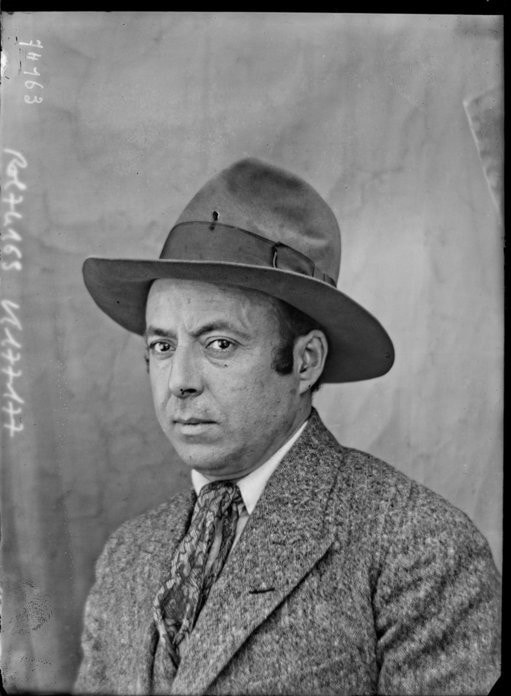
Mateo HERNANDEZ
Mr. Hernandez was born in 1884 in Béjar, a small Spanish town near Salamanca. His father, a stonemason, «Architecte, granit builder », taught him very early how to work this hard material, directly from the block.
The young man first studied at the University of Salamanca in 1906 where his talent allowed him to receive a scholarship to then join the School of Fine Arts of Madrid, where he had little time left. But Paris is the Capital of Arts that fascinates young artists from all over the world, and Mateo arrived there in 1910 in his twenty-fifth year, already exhibiting at the Salon d'Automne that year. In 1913, following his meeting with Fernande, a teacher who would be his companion for life, he settled there definitively. This allowed him, thanks to his salary, to devote himself to sculpture, the direct cutting on hard stone. Granite, porphyry, mahogany and ebony become his preferred materials, but the couple then lives in a near misery, because this cutting technique, without preparatory modeling, on hard or brittle materials, is hazardous, uncertain and time-consuming. This is what the artist likes: «I only like the stones that resist me, I like the difficulty» he said when he was told about his work.
From 1919, this independent man, who had no gallery or merchant, exhibited regularly at the Salon d'Automne, the Salon des Indépendants and the Tuileries. He sells his works, almost exclusively animal, in these Salons or directly to collectors. The success came quickly in 1920 with a Panther purchased at the Salon d'Automne by Baron Rothschild; it was confirmed with La Panthère de Java, diorite of almost two meters long, conserved at the MET in New-York, which won the Prize for Sculpture at the International Exhibition of Decorative Arts in 1925.
In 1927, a retrospective in Madrid made him known in Spain where he would not remain; the following year, the retrospective of the Musée des Arts Décoratifs in Paris consecrated his reputation which became international. He then acquired a property in Meudon, making it a special place of life with a private zoo where a hyena and a bear live together. He remained there throughout the Second World War, exhausted himself on monumental works of several tons which he often worked outdoors, and died in 1949. His works are rare on the market, mainly unique animal pieces of which very few have been translated into bronze, and he also makes on request some busts and nudes.

